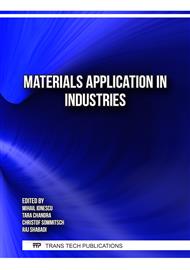p.3
p.11
p.17
p.23
p.31
p.37
p.43
p.51
High-Strength PPS-Polymer Composites for Hydrogen High-Pressure Applications
Abstract:
Hydrogen technology can be one key for a transition to sustainable energy necessary to achieve climate targets and limit global warming to 1.5 °C since the beginning of the industrial revolution. Hydrogen as a CO2 neutral energy carrier must replace fossil fuels from the existing natural gas grid and infrastructure to enable an environmentally friendly and circular economy in future societies. Batteries and e-fuels are practicable technologies for short term and quantitatively limited energy provision, with disadvantages including raw material demands and technologically complex transformation cycles. Utilizing advanced power-to-gas concepts, hydrogen will not only be most efficient technology in energy storage, but also allows adaption and reuse of existing energy transportation infrastructure.To provide volatile hydrogen gas in the required flow and energy densities, advanced compression technology needs to be developed inspired by conventional gas compression systems. Reciprocating piston compressors are developed for high-pressure hydrogen applications, providing high pressure levels and flow rates. Compression equipment must be designed for non-lubricated dry-running conditions, as high gas purity standards of hydrogen do not allow for oil-based lubricants to be introduced into the process gas. High-strength carbon fiber reinforced composites are developed as piston and packing ring materials to withstand extreme pressure differences under harsh thermo-mechanically loaded operation conditions.Promising candidates with high strength and wear resistance in the form of PPS-polymers, are developed with PTFE solid lubricants and different carbon fiber fractions to combine high strength, with low friction and wear, improve pressure operation range, and limit down times of hydrogen piston compressors. The current work describes tribological testing of advanced PPS-polymers with 10 to 30 wt.% carbon fibers in a high-velocity tribometer under hydrogen gas atmosphere. Supporting thermo-mechanical tests give new insights in deformation mechanisms of fiber reinforced polymer composites and allow conclusions on their applicability for hydrogen compression.
Info:
Periodical:
Pages:
3-9
Citation:
Online since:
December 2023
Authors:
Price:
Сopyright:
© 2023 Trans Tech Publications Ltd. All Rights Reserved
Share:
Citation:



